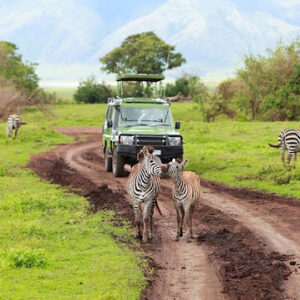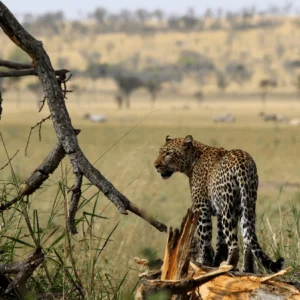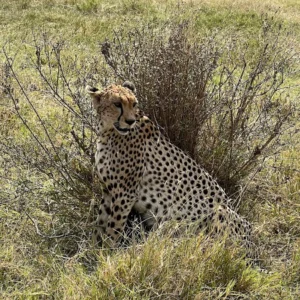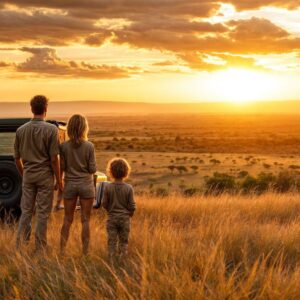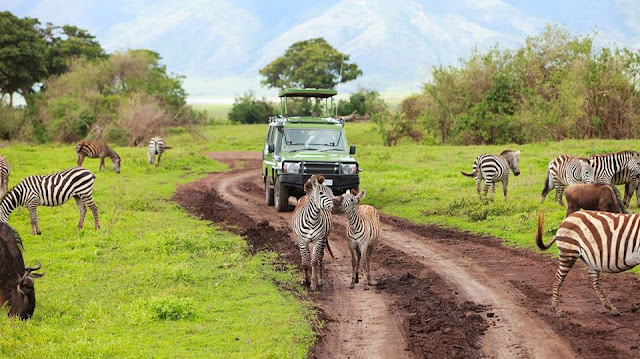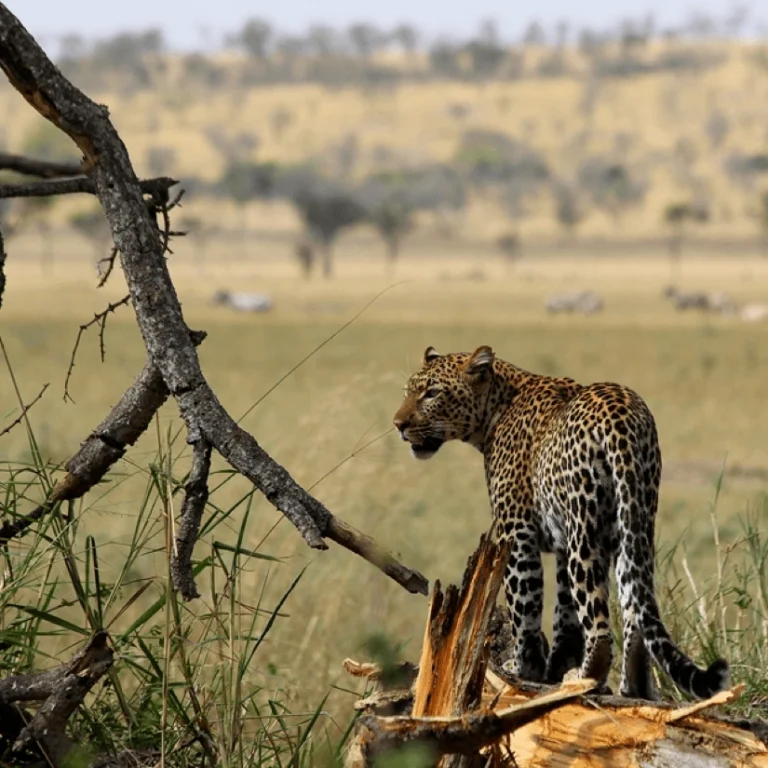A Comprehensive Breakdown of Kilimanjaro Campsites by Various Routes.
Mount Kilimanjaro, the highest peak in Africa, stands majestically in Tanzania, drawing adventurers and nature enthusiasts from around the world. Scaling this iconic mountain involves navigating through various routes, each offering a unique blend of challenges and breathtaking scenery.
Understanding the breakdown of Kilimanjaro campsites along these routes is essential for trekkers planning their ascent. In this article, we will delve into the specifics of each route, exploring the key campsites, altitudes, and distinctive features that make each journey to the summit a remarkable experience. Additionally, we will address frequently asked questions (FAQs) to guide trekkers in planning a successful and fulfilling Kilimanjaro expedition.
1. Lemosho Route Campsites:
The Lemosho Route is renowned for its scenic beauty and low traffic, making it a preferred choice for those seeking a more secluded trek. This route typically spans 7-8 days, allowing for proper acclimatization. Here’s a breakdown of the campsites along the Lemosho Route:
- Londorossi Gate (2,100 meters): The journey begins at Londorossi Gate, where trekkers register before embarking on their ascent.
- Forest Camp (2,750 meters): Nestled in the lush rainforest, this campsite provides a serene atmosphere as trekkers start their adventure.
- Shira 1 Camp (3,505 meters): Positioned on the expansive Shira Plateau, this campsite offers stunning views of the surrounding landscapes.
- Shira 2 Camp (3,810 meters): As the altitude increases, Shira 2 allows trekkers to acclimatize to the changing conditions.
- Moir Hut (4,200 meters): A less frequented campsite, Moir Hut provides a quieter setting for acclimatization.
- Barranco Camp (3,960 meters): Known for the unique Barranco Wall, this campsite is strategically located for acclimatization.
- Karanga Camp (4,035 meters): Positioned just before the final ascent to Barafu Camp, Karanga allows for additional acclimatization.
- Barafu Camp (4,680 meters): The last camp before the summit attempt, where trekkers rest and prepare for the challenging climb.
- Mweka Camp (3,100 meters): The final descent campsite, offering a well-deserved rest after a successful summit.
Camp Amenities:
- Portable Toilet (1 per 5 climbers)
- Camp shower (1 per 5 climbers)
- Water filter
- Large Comfortable Dining Tent
- Dining chairs with backs
- Walk-in tents with camp bed
2. Shira Route Campsites:
The Shira Route, known for its diverse landscapes, starts on the Shira Plateau, providing trekkers with a unique perspective of Kilimanjaro. Here’s the breakdown of campsites along the Shira Route:
- Shira 1 Camp (3,610 meters): The starting point for Shira Route trekkers, offering expansive views on the Shira Plateau.
- Shira 2 Camp (3,850 meters): A higher-altitude campsite where trekkers continue their journey, acclimatizing to the increasing elevation.
- Moir Hut (4,200 meters): Shared with the Lemosho Route, this campsite provides a peaceful setting for acclimatization.
- Barranco Camp (3,960 meters): Trekkers on the Shira Route merge with the Lemosho Route at Barranco Camp for the onward ascent.
- Karanga Camp (4,035 meters): Positioned just before Barafu Camp, it serves as a crucial acclimatization point.
- Barafu Camp (4,680 meters): The base camp for the summit attempt, offering trekkers the chance to rest and prepare for the challenging climb.
- Mweka Camp (3,100 meters): The descent campsite for Shira Route trekkers, providing a well-earned reprieve after a successful summit.
3. Machame Route Campsites:
Referred to as the “Whiskey Route,” the Machame Route is popular for its scenic beauty and varied landscapes. Trekkers typically complete this route in 6-7 days. Kilimanjaro campsites according routes map. Here’s the breakdown of campsites along the Machame Route:
- Machame Gate (1,490 meters): The starting point for Machame Route trekkers, where the journey to Uhuru Peak commences.
- Machame Camp (2,835 meters): Nestled in the rainforest, this campsite offers a serene environment for the first night on the mountain.
- Shira Camp (3,750 meters): As trekkers ascend, they reach the Shira Plateau, where Shira Camp provides expansive views.
- Lava Tower (4,630 meters): Not a traditional campsite, but a significant point for acclimatization during the day’s hike.
- Barranco Camp (3,960 meters): Known for its unique Barranco Wall, this campsite is a crucial acclimatization stop on the Machame Route.
- Karanga Camp (4,035 meters): Positioned just before the final ascent to Barafu Camp, it allows for additional acclimatization.
- Barafu Camp (4,680 meters): The last camp before the summit attempt, trekkers rest and prepare for the challenging climb.
- Mweka Camp (3,100 meters): The final descent campsite, offering a well-deserved rest after a successful summit.
4. Marangu Route Campsites:
Known as the “Coca-Cola Route,” the Marangu Route is the most popular path up Kilimanjaro due to its relative simplicity. Kilimanjaro Campsites According Routes. Classic Kilimanjaro base camp altitude. Kilimanjaro base camp trek. Amazing kilimanjaro camps map. Trekkers usually complete this route in 5-6 days. Here’s the breakdown of campsites along the Marangu Route:
- Marangu Gate (1,860 meters): The starting point for Marangu Route trekkers, where the ascent to Uhuru Peak begins.
- Mandara Hut (2,700 meters): The first overnight stop, nestled in the lush rainforest with vibrant flora and fauna.
- Horombo Hut (3,720 meters): Positioned above the tree line, trekkers acclimatize to the increasing altitude at this campsite.
- Kibo Hut (4,703 meters): The final camp before the summit attempt, providing trekkers with an opportunity to rest and prepare for the ascent.
- Uhuru Peak (5,895 meters): While not a traditional campsite, reaching Uhuru Peak is the ultimate goal for Marangu Route trekkers.
- Horombo Hut (3,720 meters): Trekkers descend to Horombo Hut for their final night on the mountain before completing the journey.
5. Rongai Route Campsites:
The Rongai Route offers a unique perspective of Kilimanjaro from the north and is known for its less crowded trails. Trekkers typically complete this route in 6-7 days. Here’s the breakdown of campsites along the Rongai Route:
- Rongai Gate (1,950 meters): The starting point for Rongai Route trekkers, where the ascent to Uhuru Peak begins from the northern side.
- Rongai First Cave (2,620 meters): The first overnight campsite, situated in the rainforest with stunning views.
- Rongai Second Cave (3,450 meters): Trekkers ascend to the alpine desert, where the landscape transforms as they reach the second campsite.
- Kikelewa Camp (3,600 meters): A less crowded campsite with breathtaking views of the surrounding landscape.
- Mawenzi Tarn Hut (4,330 meters): Nestled at the base of Mawenzi Peak, this campsite offers a unique setting for trekkers.
- Kibo Hut (4,703 meters): The final camp before the summit attempt, where trekkers rest and prepare for the challenging climb.
- Uhuru Peak (5,895 meters): The ultimate goal for Rongai Route trekkers, offering panoramic views of the surrounding landscapes.
- Horombo Hut (3,720 meters): Trekkers descend to Horombo Hut for their final night on the mountain before completing the journey.
6. Northern Circuit Route Campsites:
The Northern Circuit Route is the longest and newest route on Kilimanjaro, known for its stunning scenery and high success rates. Trekkers typically complete this route in 9-10 days. Mt Kilimanjaro Campsites (incl. Base Camp and Crater Camp). Here’s the breakdown of campsites along the Northern Circuit Route:
- Londorossi Gate (2,360 meters): The starting point for the Northern Circuit Route, where trekkers register before embarking on their journey.
- Forest Camp (2,630 meters): The first overnight stop, surrounded by lush rainforest and offering a serene atmosphere.
- Shira 1 Camp (3,505 meters): Positioned on the Shira Plateau, trekkers acclimatize to the changing conditions at this campsite.
- Shira 2 Camp (3,810 meters): Continuing the ascent, trekkers reach Shira 2, which provides stunning views of the Shira Ridge.
- Moir Hut (4,200 meters): A less frequented campsite that offers a quieter setting for acclimatization.
- Buffalo Camp (4,020 meters): Nestled in a scenic valley, this campsite is an ideal spot for acclimatization.
- Third Cave Camp (3,870 meters): A lower-altitude campsite that provides trekkers with a brief reprieve before continuing their ascent.
- School Hut (4,715 meters): The final camp before the summit attempt, where trekkers rest and prepare for the challenging climb.
- Uhuru Peak (5,895 meters): The ultimate goal for Northern Circuit Route trekkers, offering panoramic views of the surrounding landscapes.
- Mweka Camp (3,100 meters): The final descent campsite, providing a well-deserved rest after a successful summit.
Kilimanjaro Base Camp – Where the Summit Adventure Begins
Mount Kilimanjaro, Africa’s highest peak, stands majestically in Tanzania, beckoning adventurers from around the world. Its snow-capped summit, shrouded in myth and mystery, is a siren call to those seeking to conquer its heights. But before the final push to the top, trekkers must first make their way to the base camps, where the journey truly begins.
- Barafu Base Camp (4,670 meters):
Barafu, meaning “ice” in Swahili, is the starting point for hikers on the Lemosho, Machame, and Umbwe routes. Nestled on the slopes of Kibo, Kilimanjaro’s highest volcanic cone, Barafu serves as a staging ground for the summit bid. Here, climbers prepare mentally and physically for the grueling ascent. Zigzagging up to the sub-summit, Stella Point (5,739 meters), they face the biting cold and thin air. The night before the summit push is spent at Barafu, where anticipation and adrenaline fill the air.
Kibo Hut/Camp (4,700 meters)
The Marangu Route, unique among Kilimanjaro trails, offers hut accommodation rather than tents. Kibo Hut, perched at 4,700 meters, provides a cozy respite for trekkers. Here, climbers rest, share stories, and steel themselves for the final climb. The hut’s wooden walls echo with the footsteps of countless adventurers who have passed through, leaving behind their dreams and determination.
Horombo Hut (3,720 meters)
Descending from the summit, trekkers find solace at Horombo Hut. Located at a lower altitude, it offers a welcome change from the thin air above. The descent is a time for reflection—a chance to savor the triumphs and challenges faced during the ascent. As the sun sets over the savannah below, climbers gather around the fire, their faces etched with exhaustion and exhilaration.
The Summit Adventure
From these base camps, climbers embark on the ultimate adventure—the push to the Uhuru Peak (5,895 meters). Each step brings them closer to the roof of Africa. The air grows thinner, the landscape more otherworldly. The glaciers shimmer in the moonlight, and the stars seem within arm’s reach. It’s a battle of wills, body against altitude, as they inch toward the summit sign—a moment frozen in time.
As dawn breaks, the horizon blushes with hues of pink and gold. The world unfolds below, stretching to infinity. Tears mix with sweat as climbers embrace, knowing they’ve conquered not just a mountain but their own limits. The descent awaits, but for now, they stand on the roof of Africa, where dreams touch the sky.
So, if you hear the call of Kilimanjaro, lace up your boots, breathe in the crisp mountain air, and set forth. The base camps await—their stories etched in every stone, every whispered prayer. For here, at the foot of the mighty mountain, the summit adventure truly begins.
Conclusion: Best Kilimanjaro Campsites
Experience the comfort of Kilimanjaro Campsites – Where Relaxation Meets Adventure. The to 10 Kilimanjaro Camping. What to Expect – Pristine Trails. Lemosho Route Camp – Luxury camping on Kilimanjaro. Camping on the Lemosho Route is fully supported and is set amidst the amazing backdrop of Mt Kilimanjaro. You will be sleeping in walk-in tents with camp beds and camp pillows. Your porters will set up camp while you hike

